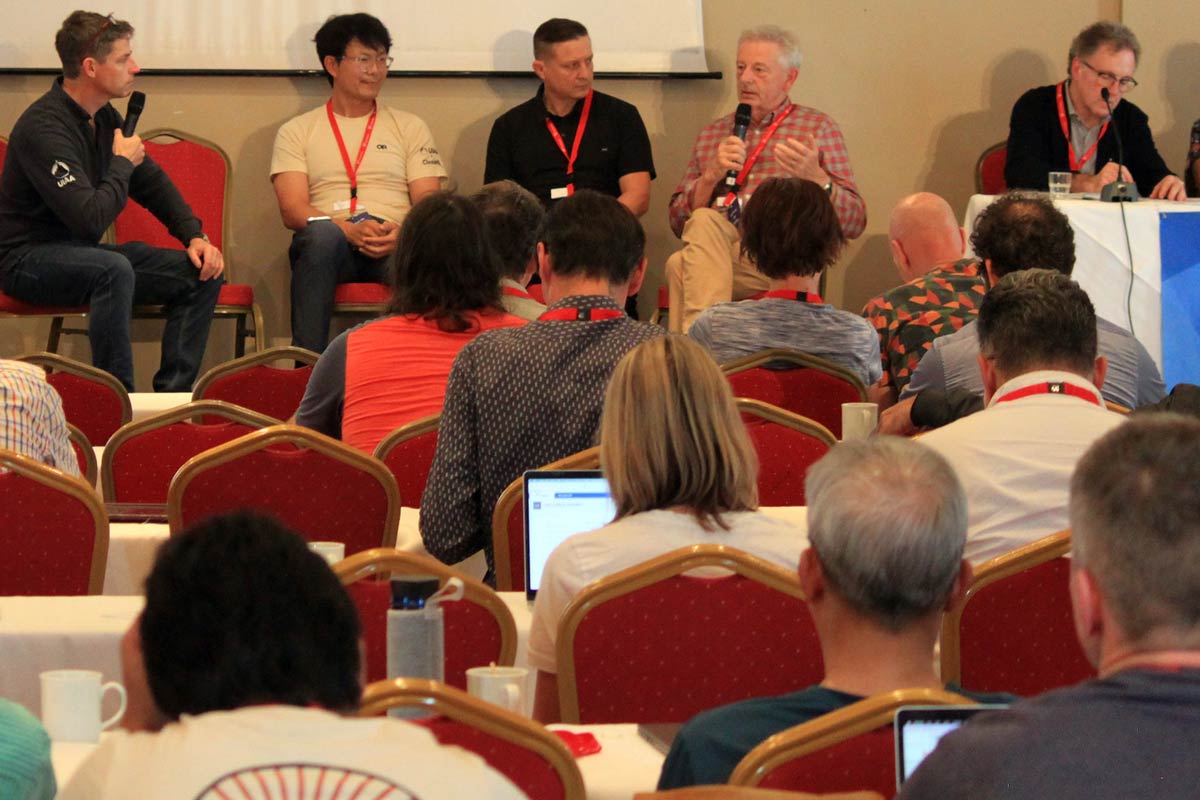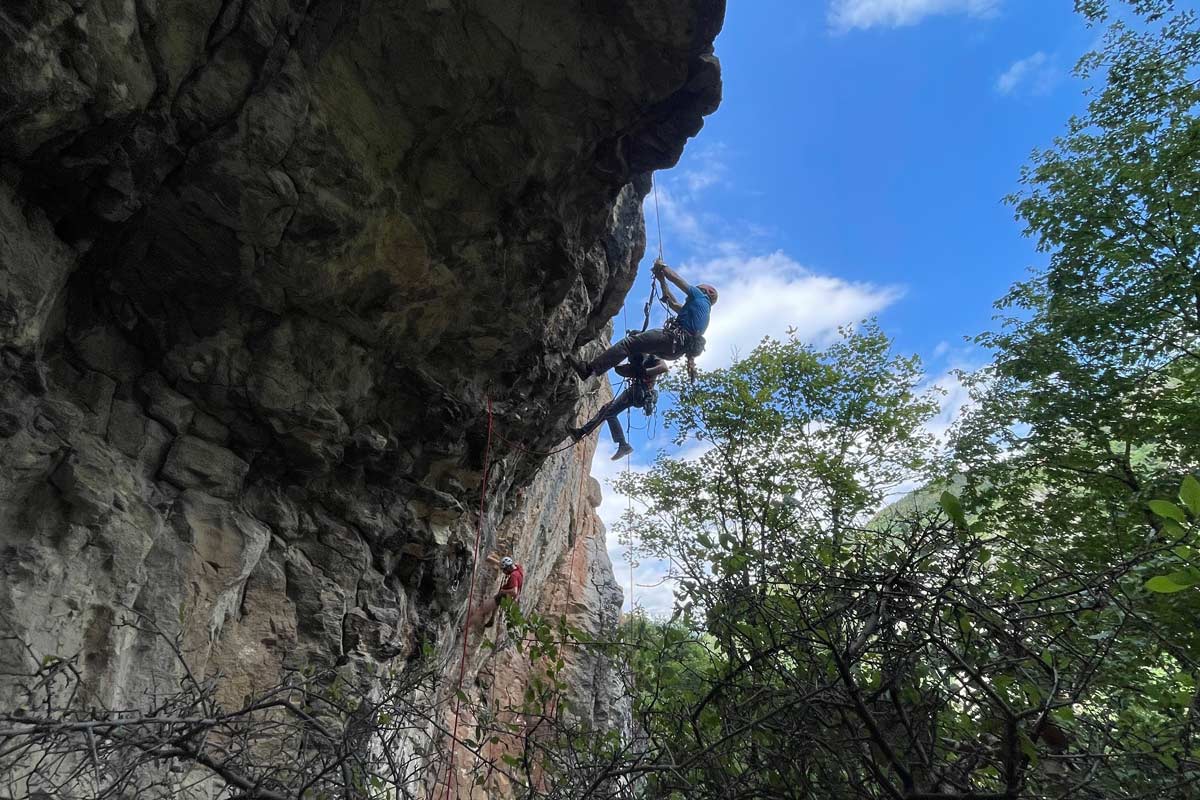ROCK ANCHORS AND BOLTS
In recent years, the UIAA has dedicated significant investment, some 200,000 euros and counting, and resources to research related to rock anchors and bolts. Initially, this centred around the subject of corrosion and stress corrosion cracking failure. A significant milestone was reached when the updated UIAA Rock Anchors Standard was released in 2020. However, work in this field remains significant. While new products – certified to Standard 123 – are now available on the Market, the challenge is ensuring both bolters and climbers are aware of the issues related to corrosion and the importance of using certified products.
Essential Resources
Please find details below of the key resources made available on the subject by the UIAA Safety Commission. Translations of a number of this documents are available in several languages.
123 Standard: Rock Anchors
Download
The official UIAA Standard 123 for Rock Anchors. This was last updated in December 2020.
123 Standard: Rock Anchors Explainer (Translations)
Download
The core text on the subject. This is an explanatory document, translated into several languages, which provides further context about the latest revisions to UIAA Standard 123.
123 – Simplified Pictorial Presentation
Download
The pictorial accompaniment to UIAA Standard 123.
Warning – Watch Your Anchor
Download
A snapshot of key points for climbers regarding corrosion/stress corrosion cracking failure of climbing anchors.
Warning – Letter to Bolters & Member Federations
Download
A UIAA guide for bolters on how to to choose a good quality anchor, information on markings on rock anchors and corrosion classes.
Atmospheric Stress Corrosion Cracking of Stainless Steel Rock Climbing Anchors
Download
A scientific investigation of field corrosion events by Jiří Lieberzeit, Tomáš Prošek, Alan Jarvis and Lionel Kiener.
Part 1
Part 2
UIAA / DAV: Bolting Guide
Download
A guide to installing and replacing bolts on climbing routes.
Timeline of project:
- Initial research on the subject. Creation of a dedicated Working Group.
- 2009, release of paper: ‘Extreme caution advised for anchors in tropical, marine areas’
- 2012, release of update to 2009 paper with editions also in Chinese and French
- 2015, SafeCom commits to update of UIAA Standard 123 on Rock Anchors
- 2015, version 1 of Watch Your Anchor paper published
- 2017, UIAA calls for climbing community to submit failed top anchors
- 2018, Further appeal for failed top anchors with special research focused on environmental degradation revision
- 2019, Map launched identifying locations in the world with reported anchor corrosion issues
2020 – 2023
Publication of new Rock Anchor Standard 123
- 2020, Appeal for climbers to submit fixed anchors for SafeCom to address and test possible welding issues.
- 2020, New version of Standard 123 officially published
- 2020, Translated into seven languages
- 2021, Additional focus switches to further research in welded components in top anchor assemblies.
- 2022, Lack of welding quality was identified: WG investigates further and an internal commission independently tests products from different manufactures.
- 2023, First products launched with new Standard
- 2023, Need to raise awareness about the issues with failed anchors at a grassroots level. Plans for a more considered outreach to the climbing community
- 2023, Work continues on issues related to the welded ring on top anchors. UIAA works with manufacturers to ensure quality control process in production is of a given standard.
2024 –
Outreach campaign to climbers and UIAA member associations
- 2024, Watch Your Anchor guide revised, recommendation for climbers in how to check for stress corrosion in anchors
- 2024, Letter sent to UIAA member associations helping climbers identify good quality anchors and the stress corrosion classes
MAP OF REPORTED
ANCHOR FAILURES
Report failed
anchors
Support SafeCom with its analysis and to help add more areas to the map thereby improving the information available to climbers about dangerous or potentially dangerous areas to climb.
Featured News
PETZL
ReBolting – Maintaining Climbing Routes in Switzerland
Old, rusty, or unsafe equipment, anchor connections made of worn-out ropes, or an overgrown route – there are many reasons to maintain a climbing route on the rock to ensure climbers’ safety. But who ensures that routes are maintained, the equipment is properly replaced, and the character of the route is preserved? And who funds it all?
Related
Pages
CERTIFIED SUPPLIERS
OF UIAA ROCK ANCHORS
CLIMBER
SAFETY
PORTAL
















